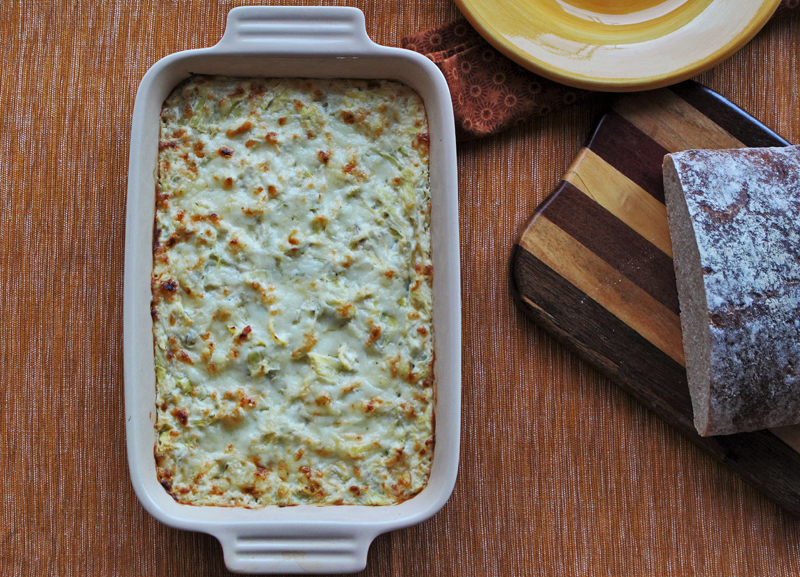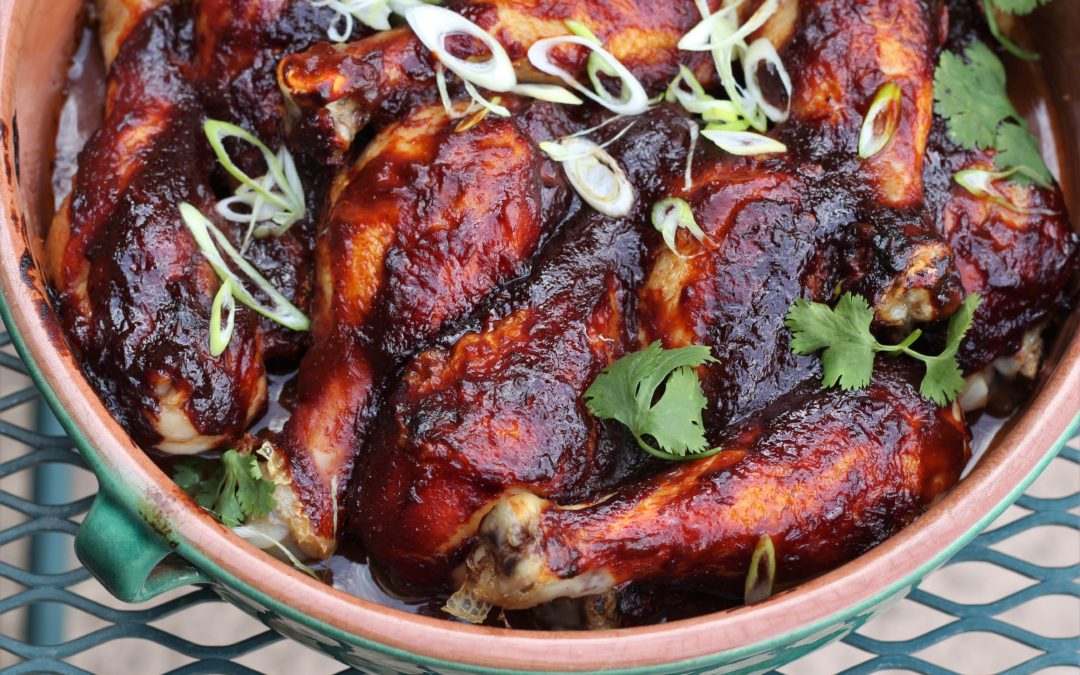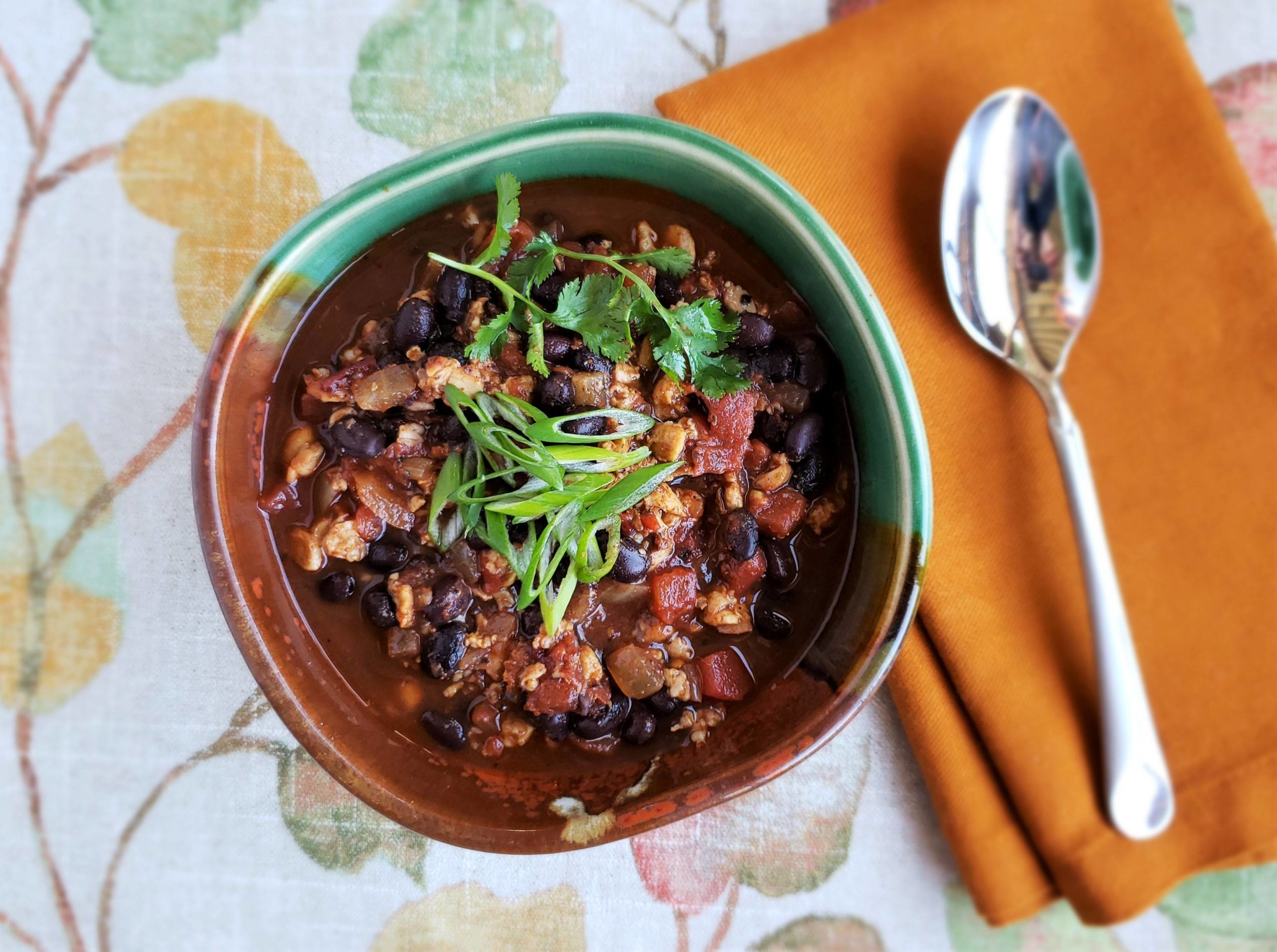Olive-oil galette--Is it a tart? A pizza with a folded edge? A pie you eat for dinner? It’s delicious no matter what you call it and, depending on your fillings, this olive-oil galette works for breakfast, lunch or dinner. This quick, easy tart base can be made...

Boursin and Yogurt Artichoke Gratin
Boursin and Yogurt Artichoke Gratin

Boursin and Yogurt Artichoke Gratin
French and American gratins, pronounced “Grawh-tAHn”, range from dense, cheesy and cream-laden to light dishes made simply with a béchamel sauce.This artichoke gratin, satisfyingly filling yet not overly cheesy works well as a dip or topping for a tartine (open-faced sandwich).
The French cheeses used, Boursin and Gruyère, are commonly available in U.S. grocery stores. The unusual gratin ingredient is the Greek yogurt as a complementary creamy element. It also adds a hint of acidity that balances the sweetness of the artichoke hearts.
Yogurt is a source of B-6 and B-12 vitamins, vitamin D, potassium but Greek yogurt offers more protein, a more diverse probiotic profile and is thicker and creamier than most regular yogurt.
Boursin and Yogurt Artichoke Gratin
10-12 servings as an appetizer
Ingredients
- 4 ounces of low-fat cream cheese, softened
- 5.2 ounces (150 grams) herbed boursin cheese, softened (see substitutes below)
- 1 cup low-fat Greek plain yogurt
- ⅛ teaspoon cayenne (too much cayenne can mute the herb flavors)
- 4 ounces gruyère (about 1 ⅓ cups shredded), divided (see substitutes below)
- 2 (14-ounce) cans artichoke hearts, drained
Steps
- Preheat oven to 400°F and adjust a rack to the middle position.
- Place the cream and boursin cheese in a mixing bowl to let them warm up a bit. Shred the gruyère and add to the bowl.
- Drain the artichokes. Squeeze by hand the liquid from the artichokes. Doing this twice works best.
- Once the cheeses are soft enough to mix together with a large spoon, add the yogurt, cayenne, 1 cup of the gruyère (the rest is for a topping) and add the artichokes (break these up between your hands as you add them to the bowl).
- Mix all ingredients and spread mixture in an 8×8” baking dish or gratin dish. Sprinkle on the remaining gruyère and place in oven. Bake for 15 minutes or until bubbling. Turn on the broiler for 2-3 minutes to create a lovely, cheesy crust. Serve hot or warm (see serving ideas below).
Substitution and taste notes options:
- Salt: This is not a missing ingredient! There is salt because the ingredients have enough added sodium to enhance flavors and balance the taste profile.
- Yogurt: Greek yogurt adds tang and a thicker texture than typical yogurt. Often artichoke gratins or dips use lemon juice or zest for a fresh tang, but Greek yogurt does double duty.
- Boursin: This soft cow-milk French cheese is often made with parsley, chives, white pepper and garlic. Or add these ingredients to a soft-style goat cheese.
- Gruyère: A cow-milk cheese that melts well with nutty flavors. Can be replaced by other cheeses that melt well like fontina and have mild flavors. Strong flavored-cheese like cheddar overwhelm the artichoke and herb notes.
Love cheese? Here’s a few notes on enjoying cheese & French cheese passion:
- Top with some Panko or fresh bread crumbs that have been lightly softened with some butter or olive oil for a crunchy bread topping
- Serve as a dip with crackers, crostini or use as a topping for a sandwich tartine
- Toss in 3/4 cup of cooked spinach that has been well squeezed to remove any juices but add just a bit more cheese and yogurt to maintain the gratin texture

“Tout le gratin sera là!” = “Everybody who’s anybody will be there!”

Corn, Tomato and Spinach Olive-Oil Galette

Go-To BBQ Sauce: Smokey, Spicy, Tangy & Sweet
Creating a BBQ sauce recipe is basically asking for a culinary throwdown. With parts of our country owning different styles and declaring theirs as the best, I tread on hallowed ground. However, when I get a craving for BBQ, these are the ingredients that hit the...

Lazy, Lighter Chocolat Chaud—Hot Chocolate with French Airs
It snowed in the desert on National Margarita day. Neither event makes sense—a beach-boozy drink celebrated in winter and snow-covered cactus. Instead of tequila, my beverage is based on chocolate liquor—the meat of the cocoa bean.Any cold day seems a good day for a...

Michele Redmond
French-trained Chef, Registered Dietitian Nutritionist & Food Enjoyment Activist
It's about Making Food First
Get Eat Well Academy periodic updates on easy ways to choose and cook foods that satisfy your appetite, nurture your body and make eating well a pleasure.




 The pleasure of food, good health and well-being through simple habits for eating well and flexitarian low-key cooking.
The pleasure of food, good health and well-being through simple habits for eating well and flexitarian low-key cooking. 








